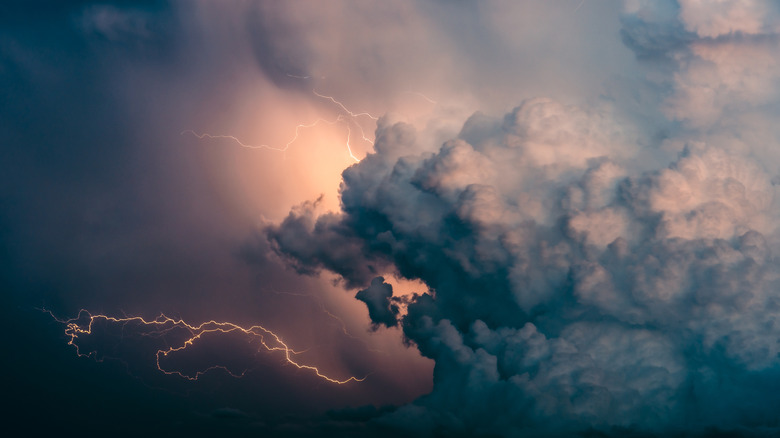Does A Red Sunrise Always Mean Storms Are On The Way?
Whether you are a seasoned sailor or a steadfast landlubber, you've probably heard the saying, "Red sky at night, sailor's delight; red sky in the morning, sailors take warning." It's a widespread adage that pops up in various forms throughout much of recorded history. There is a version that says, "Red sky at morning, shepherd's warning," implying that red dawns are dangerous regardless of whether you are on land or sea. There is even a spin on the adage in the Bible (Matthew 16:2-3), in which Jesus says, "When it is evening, ye say, It will be fair weather: for the heaven is red. And in the morning, It will be foul weather to-day, for the heaven is red and lowering". Today, in the age of weather apps, adages of this sort seem more like old wives' tales, but there is a scientific basis for this particular case.
Sailors since ancient times have learned to spot the warning signs of storms with nothing more than their eyes, and the color of the sky is one of the most useful benchmarks for this. The sky often appears red in the mornings and evenings because when the sun is low on the horizon, its light passes through a denser portion of the atmosphere. This is the same reason that the moon sometimes appears orange. The reddest of red skies occur when there is high atmospheric pressure, and depending on whether that happens at sunrise or sunset, it could mean a storm is brewing.
How atmospheric pressure shapes the weather
The atmospheric pressure at surface level varies depending on the temperature and density of the air in a given place at a given time. When an area experiences higher air pressure compared to its surroundings, it is called a high-pressure system. High pressure systems push air downwards towards the ground, keeping it warmer and preventing the formation of clouds. Thus, high-pressure systems are associated with clear skies, and fair weather for sailors (not to mention those shepherds as well).
When a particular area experiences lower air pressure than its surroundings, this creates a low-pressure system. In low-pressure systems, air gets pulled upwards from the ground, rising up to the higher levels of the atmosphere to form clouds, which can in turn bring precipitation, thunderstorms, and even hurricanes. Low-pressure systems do not always guarantee these storms, but the risk is high.
Weather systems in the mid-latitudes move west to east, so if you see the sun setting in a red sky, it means a high-pressure system is moving in, bringing fair weather with it. If you see the sun rise in a red sky, it means there is a high-pressure system in the east, implying a low-pressure system moving in soon from the west. Notably, this adage is only true in the mid-latitudes. When sailing near the equator or the poles, the prevailing winds move east to west. In other words, red sky at night, sailors take fright.

